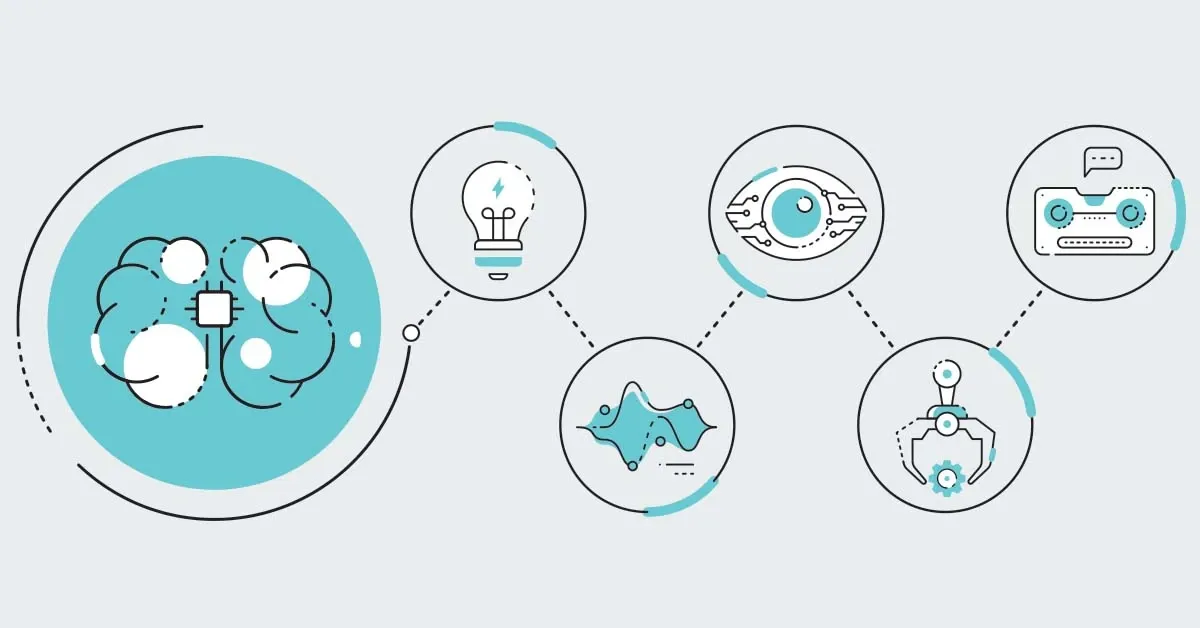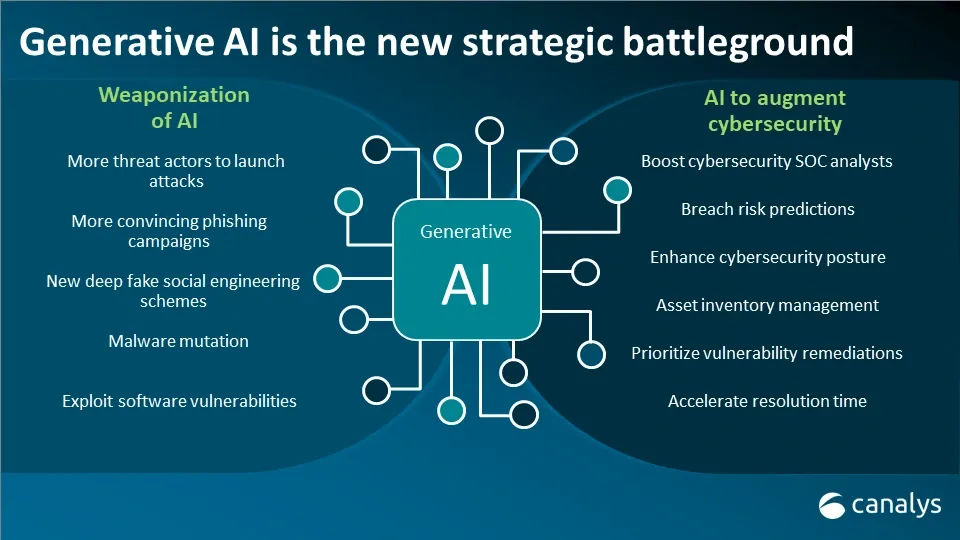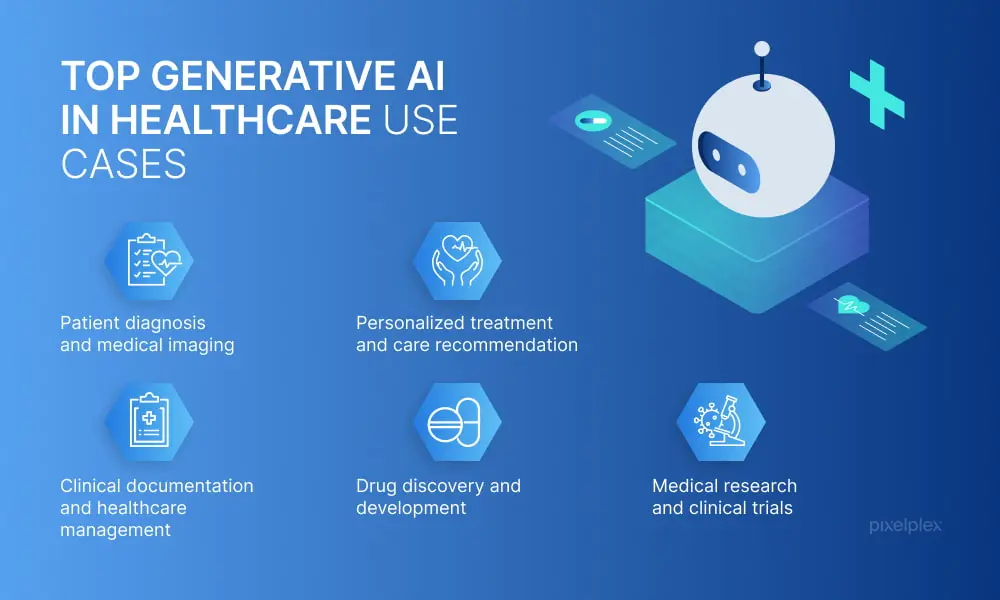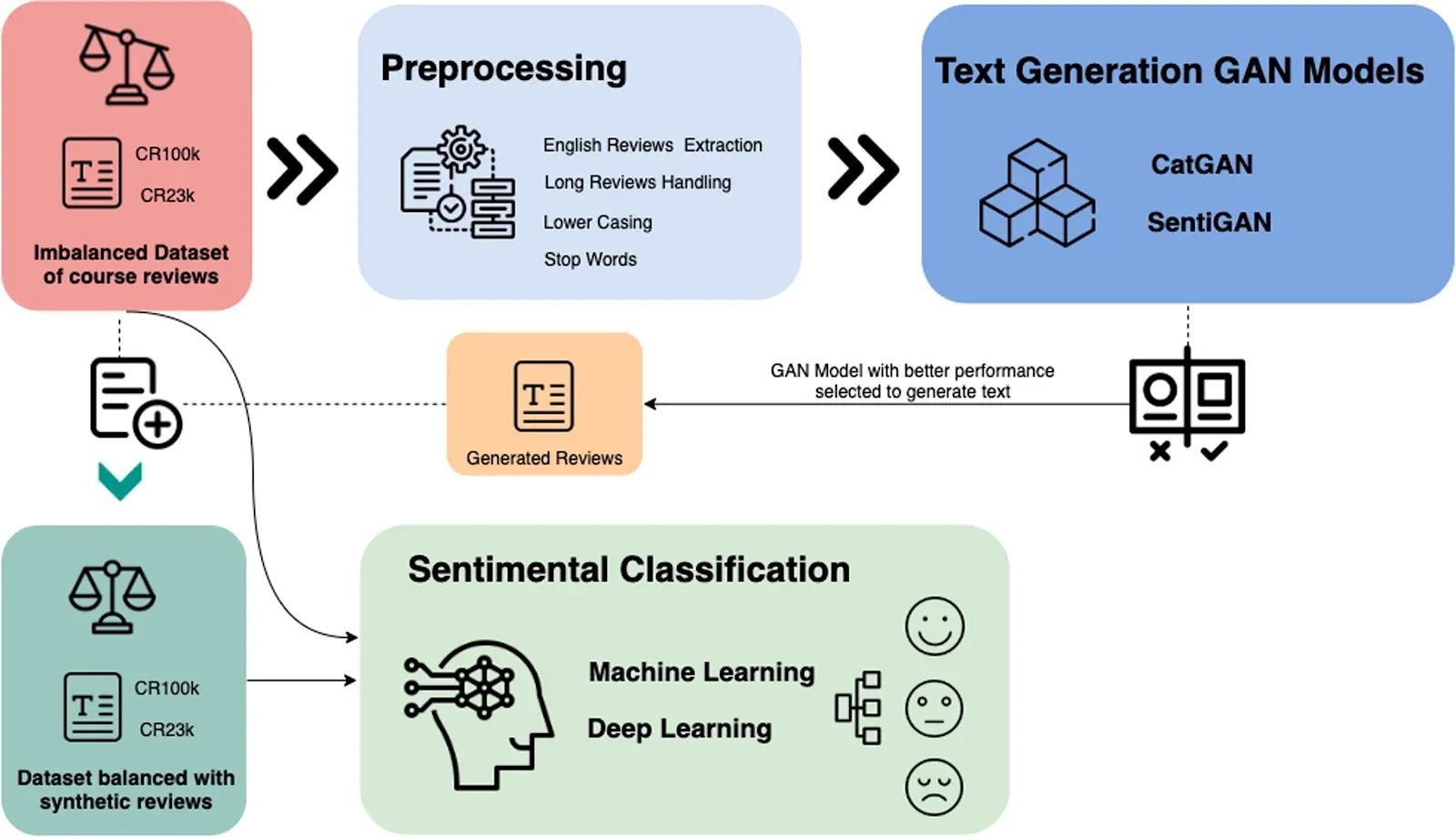Did you know that Generative AI applications can transform how businesses operate like never before?
If you are interested in AI, you’re in for a surprise.
Generative AI, a subset of artificial intelligence, goes beyond just understanding and responding - it creates.
From drafting emails to designing graphics, these applications are redefining creativity and productivity in the business domain.
Creating a new piece of content or a design from scratch requires time, effort, and skill.
What if AI could assist you with that?
Think of the possibilities! An increase in efficiency, a reduction of repetitive tasks, and a chance to focus on more strategic initiatives.
In this blog, we explore how Generative AI apps are offering innovative solutions that could elevate your business to another level. Get ready to reimagine your business potential with the help of artificial intelligence.
Benefits of Implementing Generative AI Apps In Business
Using Generative AI apps in business can result in efficiency improvements, cost savings, enhanced decision-making capabilities, personalized customer experiences, and automation of repetitive tasks.
These benefits can give businesses a competitive edge, drive innovation, and help in long-term success.
Let us see some of the benefits below!

Efficiency improvements and cost savings
Generative AI apps can automate and streamline various business processes, leading to significant efficiency improvements and cost savings.
By automating repetitive tasks, businesses can free up valuable human resources by automating repetitive tasks to focus on more value-added activities.
This can result in increased productivity and reduced operational costs.
Enhanced decision-making capabilities
Generative AI apps can process and analyze large amounts of data in real-time, enabling businesses to make more informed and accurate decisions.
By uncovering patterns and insights that may be missed by human analysts, generative AI can provide valuable data-driven insights to support strategic decision-making.
Personalized customer experiences
Generative AI apps allows businesses to deliver highly personalized customer experiences.
By analyzing customer data and behavior, generative AI can generate personalized recommendations, offers, and content tailored to individual preferences.
This level of personalization can lead to increased customer satisfaction, loyalty, and, ultimately, improved business outcomes.
Automation of repetitive tasks
Generative AI apps can automate repetitive and time-consuming tasks, freeing up human employees to focus on more complex and strategic activities.
For example, in customer service, generative AI-powered chatbots can handle basic customer inquiries, troubleshoot issues, and provide support 24/7.
This automation improves efficiency and ensures a consistent and prompt response to customer queries.
Now, we have explored the benefits of having Generative AI Apps in business, in the following section, we will see some real-world examples of successful AI App implementation.
Real-world Examples of Successful AI Apps
Here are a few real-world examples of businesses that have successfully implemented generative AI apps and the positive impacts they have experienced:

Virtual Assistants and Chatbots
Companies like Google, Amazon, and Apple already use generative AI-powered virtual assistants and chatbots, such as Google Assistant, Amazon Alexa, and Apple Siri.
These virtual assistants understand user queries, engage in natural language conversations, and perform tasks like setting reminders, answering questions, and even making purchases.
By providing personalized and efficient customer support, these applications have improved user experiences, increased customer satisfaction, and contributed to revenue generation for the respective companies.
OpenAI's GPT-3
OpenAI developed GPT-3 (Generative Pre-trained Transformer 3), a state-of-the-art language model that uses generative AI to create human-like text.
GPT-3 has been used in various applications, including content generation, chatbots, and coding assistance.
For instance, startups like Copy.ai have used GPT-3 to automate copywriting, resulting in significant time savings and improved business productivity.
By generating high-quality content that aligns with customers' needs and preferences, GPT-3 has positively impacted revenue generation and customer satisfaction.
Autodesk's Generative Design
Autodesk, a leading software company in the architecture, engineering, and construction industry, already using generative design using AI.
Their generative design tools help engineers and designers explore multiple design solutions quickly by inputting constraints and requirements.
The AI algorithm generates and explores numerous design options, considering factors like material properties, weight limits, and structural requirements.
This has resulted in optimized designs, reduced material usage, improved product performance, and cost savings for businesses.
Healthcare: AI in Diagnostics and Telemedicine
Artificial intelligence is making healthcare better and more personal. It helps doctors diagnose diseases and personalize treatment plans for each person's unique needs.
It's even helping monitor our health at home, with wearable devices that keep track of our heart rate, blood pressure, and sugar levels.
Customer Service: Virtual Assistants and Chatbots
Have you ever chatted with a customer service representative online? Chances are, you were actually talking to an AI.
Virtual assistants and chatbots are being used to answer questions and solve problems 24/7.
They also learn from each interaction so they can provide even better service in the future.
Finance: Risk Assessment and Robo-advisors
In the finance world, AI makes jobs like spotting fraud, assessing risk, and deciding who should get a loan much faster and more accurate.
Robo-advisors are AI tools that suggest investment strategies based on analyzing market trends and a person's risk tolerance. They really take the guesswork out of investing.
Retail: Personalized Recommendations and Visual Search
When shopping online, you may get suggestions for products you might like. That's AI using your past purchases and browsing history to make personalized recommendations.
Also, some retailers use AI to let customers upload pictures of products they want, and then they provide a list of similar items available for purchase.
Transportation: Self-driving Cars and Route Optimization
On the roads, AI is used for more than just self-driving cars.
It optimizes routes to save time and fuel, helps manage traffic to reduce jams, and even figures out the most eco-friendly way to deliver packages using drones.
Suggested Reading:
Steps to implement generative AI apps in your business
By following these steps, you can effectively add generative AI apps in your business, using their potential to enhance productivity, personalization, and decision-making capabilities.
So, let us start with the steps…

Step 1
Identifying business needs and goals
Start by knowing your business needs and goals that generative AI can help address.
Determine the areas where generative AI can bring the most value, such as content creation, personalization, automation, or decision-making support.
Clearly defining your objectives will guide the implementation process and ensure that the generative AI app aligns with your business strategy.
Step 2
Choosing the right AI technology and tools
Research and select the appropriate AI technology and tools that align with your business needs and goals.
Consider factors such as the type of generative AI models required, the complexity of the algorithms, the scalability of the technology, and the compatibility with your existing systems and infrastructure.
Consulting with AI experts or partnering with AI solution providers can help in making an informed decision.
Step 3
Data collection and preparation
Accumulate and prepare the relevant data needed for training the generative AI models.
Depending on the application, this may involve collecting and organizing large datasets, ensuring data quality and consistency, and anonymizing sensitive information.
Additionally, consider any ethical or legal considerations around data usage and privacy to ensure compliance.
Step 4
Development and testing of the AI app
Develop the generative AI app using the chosen technology and tools.
This involves training the AI models using the prepared data and fine-tuning them to achieve the desired outcomes.
Rigorous testing and validation are crucial to ensure the generative AI app's reliability, accuracy, and performance of the generative AI app.
Iterative development and testing cycles may be required to refine the model and optimize its results.
Step 5
Integration into existing systems and workflows
Integrate the generative AI app into your existing systems and workflows to ensure seamless operation and collaboration within your organization.
This may involve integrating the app with existing software applications, databases, or APIs.
Consider any necessary modifications or updates to your infrastructure to support the deployment and integration of the generative AI app.
Step 6
Monitoring and refinement
Continuously monitor the performance and outcomes of the generative AI app once it is deployed.
Keep track of key metrics, gather user feedback, and make necessary refinements to improve the app's effectiveness and address shortcomings.
Regularly update and retrain the AI models to adapt to changing business needs and evolving data patterns.
After the steps, it's time to see some of the limitations and challenges that we face with generative AI app implementation.
Overcoming Challenges and Ensuring Success with Generative AI Apps
Making the most of new generative AI tools isn't easy. From privacy to performance, you'll face challenges. But don't worry - with the right approach, you can rise above problems.
First, ensure ethical use of data and transparency with users. Prepare your team for AI too. Also, define clear metrics to assess apps.
Continually improve apps based on feedback. Staying one step ahead lets you get the most from powerful AI assistants.
Let us discuss below some of the challenges and successes with Generative AI Apps.

Addressing Ethical Considerations and Data Privacy Concerns
Implementing generative AI apps requires addressing ethical considerations and data privacy concerns.
This involves collecting and handling data securely, anonymizing data when necessary, and maintaining transparency with users regarding their data use. Efforts should also be made to combat algorithmic bias and ensure fairness.
Training and Upskilling Employees for AI Adoption
Another critical factor is training and upskilling employees for AI adoption. Identifying skill gaps and providing necessary training resources is essential.
Investing in employee upskilling enhances their abilities to work with generative AI apps and fosters a culture of AI adoption.
Measuring and Evaluating the Performance of AI Apps
Measuring and evaluating the performance of generative AI apps is vital to ensure their effectiveness and identify areas for improvement.
Key performance indicators (KPIs) specific to generative AI apps should be defined and tracked.
Continuous Improvement and Adaptation to Changing Needs
Continuous improvement and adaptation are necessary. User feedback plays a crucial role in identifying areas for improvement.
Employing iterative development and refinement processes allows for incremental updates. It is also important to stay updated with the latest advancements in AI to ensure generative AI apps can adapt to changing needs.
Conclusion
Generative AI can help your business soar. It automates repetitive tasks so employees have more time for important work.
AI analyzes huge amounts of data to spot patterns, helping make smarter decisions. And it delivers personalized experiences keeping customers happy.
Getting started isn't always easy. Ensure privacy and fairness with data use. Train your team on working with AI.
Define clear metrics to measure impact. Continually improve apps based on feedback. Staying one step ahead lets you maximize this powerful technology.
BotPenguin uses generative AI for intelligent chatbots. Its algorithms generate dynamic, contextual responses that enhance conversations.
Understanding intent, it drives personalized interactions. BotPenguin automates repetitive tasks, delivers efficient solutions, and changes customer engagement.
Generative AI, done right, boosts efficiency, cuts costs, and grows business.
Give BotPenguin a try - your company could benefit from exceptional service and meaningful customer interactions. Take that first step to the next level with generative AI apps.
Frequently Asked Questions (FAQs)
What are generative AI apps, and how can they benefit my business?
Generative AI apps are software applications that use artificial intelligence to produce new, unique outputs.
They can benefit businesses by automating tasks, enhancing productivity and innovation, and reducing costs.
What are the potential challenges of implementing generative AI apps?
Challenges in implementing generative AI apps may include skill gaps, technical support and maintenance, data handling, and legal and regulatory obligations.
Addressing these challenges proactively can ensure a smooth deployment.
What are some common applications of generative AI apps in business?
Generative AI apps have applications in various industries, including marketing, design, healthcare, finance, and e-commerce.
They can help automate tasks, optimize processes, and improve decision-making.
How can we measure the performance of generative AI apps in our business?
Measuring the performance of generative AI apps involves defining key performance indicators (KPIs) and tracking relevant metrics to optimize their effectiveness.
User feedback and iterative development processes can also help in refinement.
What are the ethical considerations surrounding generative AI apps?
Some ethical considerations surrounding generative AI apps include algorithmic bias, intellectual property rights, and privacy concerns.
Adhering to ethical standards in AI development can build trust with users and protect against legal issues.
How can we train and upskill our employees for AI adoption?
To benefit from generative AI apps, employees require training to work efficiently and effectively with AI technology.
Identifying skill gaps and providing necessary training resources can foster a culture of AI adoption and collaboration within the organization.

